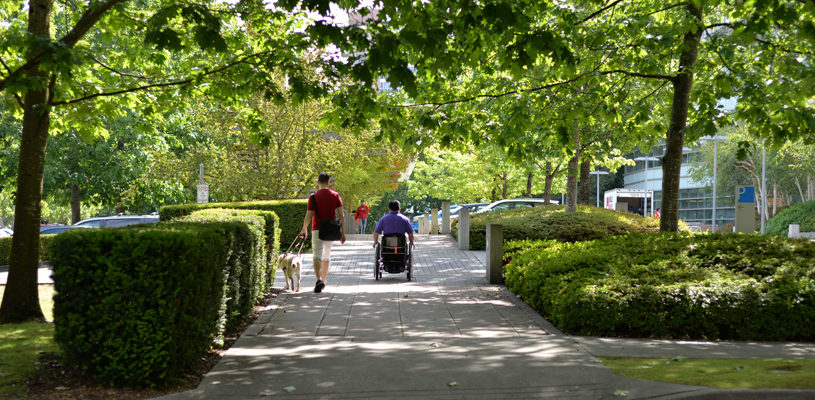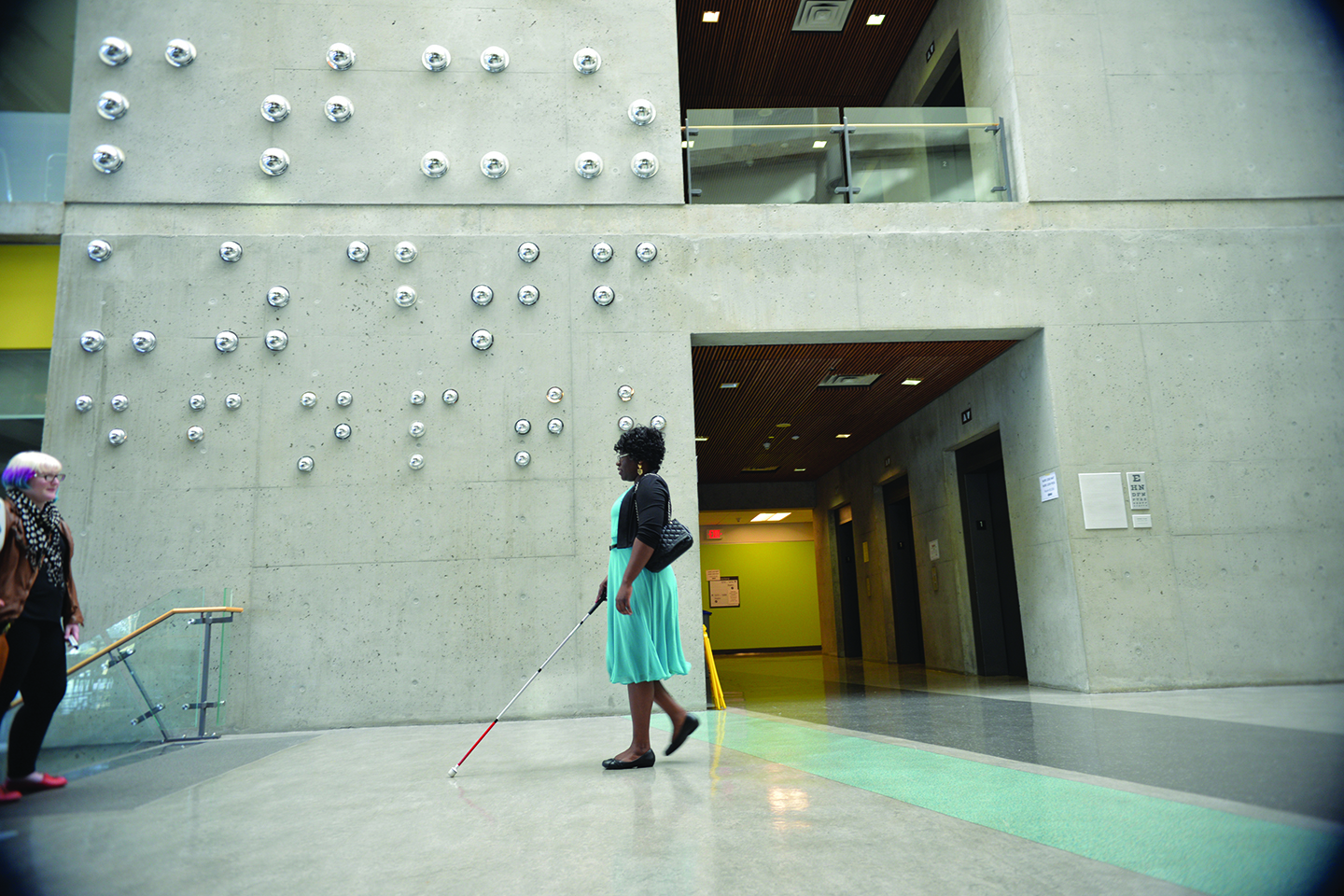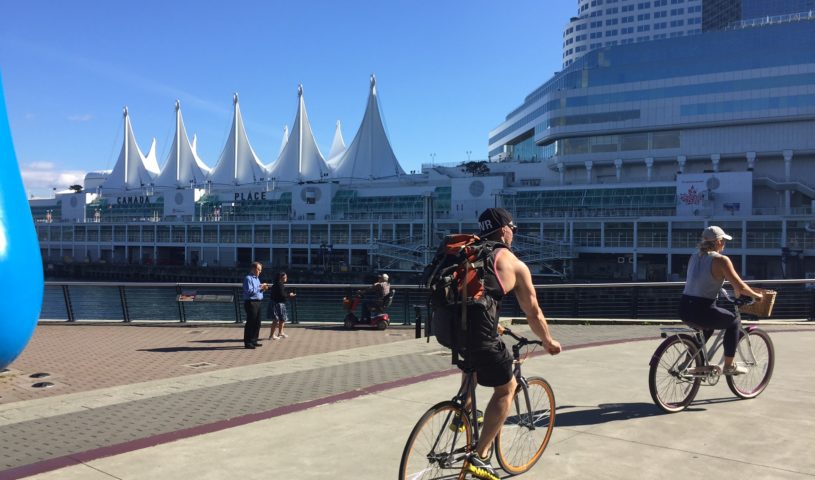Bringing the public into public spaces

Would you want to live in a house that only met minimum code requirements? If all you had was code minimum, you’d have a bathroom, but not a mirror; ventilation, but not a window. These kinds of minimum requirements can cause real accessibility issues for older adults, seniors, and people with disabilities in public spaces, too.
Within 20 years, more than nine million Canadians will have a disability. As a growing population of Canadians age, reduced mobility, vision, and hearing (often combined in a single individual) will need to be addressed. It’s important for cities to rethink and readjust to the way citizens at all stages of life will use public places and spaces.
These changing demographics require municipalities to reevaluate current practices and approaches to creating public spaces. Modern public spaces require municipal planners, designers, and architects to challenge their assumptions about who is actually using the space – and how.
Creating an access strategy for public spaces that is designed for the broadest range of users is key to providing meaningful access: the ability for anyone to independently and safely access the full built environment based on planned inclusion.
Buildings and Codes of the Past
In the past, buildings and building codes didn’t consider all the needs of current and future users. Often, there was too much focus on the disability, and not enough focus on universal accessibility.
Buildings and codes that once reflected the majority of users’ needs no longer meet the needs of a population that is aging quickly and that includes an increasingly active community of people with disabilities.
The current combination of local building codes, ad hoc committee feedback, and the past experience of planners and developers has resulted in a fragmented approach to providing access in public spaces. This, in turn, has yielded inconsistent access and the separation of people of disabilities by design. To create truly accessible places and spaces, this needs to change.
Accessible Cities of the Future
In the new millennium, access isn’t black and white. It no longer refers to a checklist of accommodations for wheelchair users. Accessible cities today must anticipate the needs of citizens of all ages, life stages, and abilities, including children, parents, older adults, and seniors.
Accessible environments must provide meaningful access, and meaningful access is determined by the user’s whole experience of a place or space. It’s the ease of use as a whole that determines the true accessibility of a public space. An accessible washroom is of little use to people with disabilities, parents with babies, or seniors with walkers if the connecting pathways, entrances, elevators, doors, and hallways aren’t also accessible. Every public venue must be planned with holistic accessibility in mind.
Additionally, meaningful access includes not only designing for people with mobility challenges, but those with vision loss, hearing loss, and intellectual disabilities. Each of these groups should be included as part of each project’s core design imperatives. A well designed public space brings all people together and plays an integral role in shaping a city. Public spaces are designed for people, and it’s the people in public spaces that bring them to life.
Creating and Managing Your Access Strategy
Universal access to the places where we live, work, and play is fundamental to creating inclusive communities and an inclusive world.
The first step toward creating inclusive communities is to identify the current level of access being provided. The Rick Hansen Foundation is piloting a LEED-style certification program – the Rick Hansen Foundation Accessibility Certification (RHFAC) – to rate the meaningful access of commercial, institutional, and residential buildings, as well as parks and trails. It is the only program in Canada using a rating system to identify and certify accessible built environments based on a consistent methodology.
RHFAC helps planners, developers, and operators assess and manage their access strategies by first creating an inventory of access issues, and then providing a roadmap to improving access as part of long-term strategy and planning. Accessibility Certification is available nationally; and, thanks to generous funding from B.C.’s Ministry of Social Development and Social Innovation, the fee for ratings is currently waived in British Columbia until March 2019.

Moving toward Meaningfully Accessible Communities
Accessible communities rely on sustainable and inclusive urban planning and design that embrace tools like Accessibility Certification to develop and create meaningful access across the entire built environment.
Whether caused by aging, accident, or injury, each of us will experience disability at some point in our lives. And, while inaccessibility threatens employment, social structure, and independent and intergenerational living, meaningful access takes into account the full lifespan of people, enables human diversity, and allows everyone to participate and live to their full potential.
Universally designed public spaces bring all citizens together. Only by looking beyond minimum regulations and requirements, and truly understanding the real needs of people and communities and planning access accordingly, can a house become a home, and our society become truly inclusive.
BRAD MCCANNELL is Vice President, Access and Inclusion at the Rick Hansen Foundation. Since founding Canadian Barrier Free Design Inc. in 1992, Brad has been a leader in the field of accessibility and has extensive experience in the application of universal design across the built environment. Contact Brad at .
as published in Municipal World, September 2017



